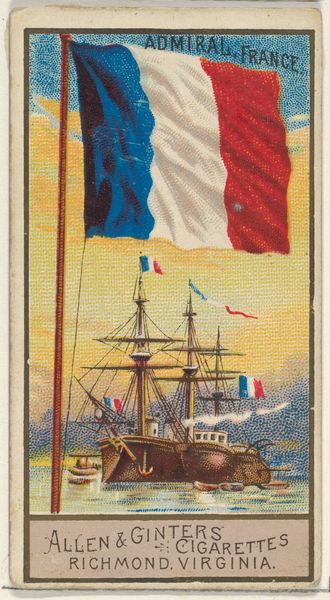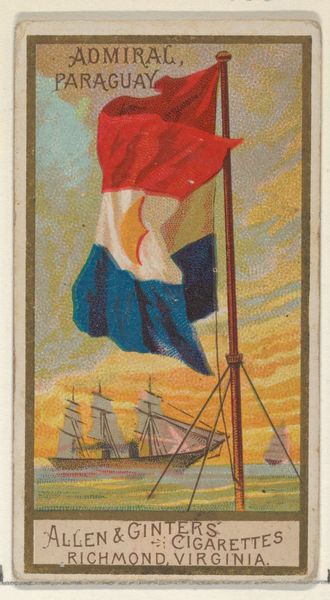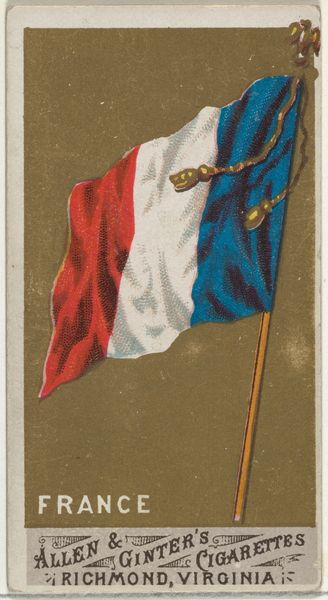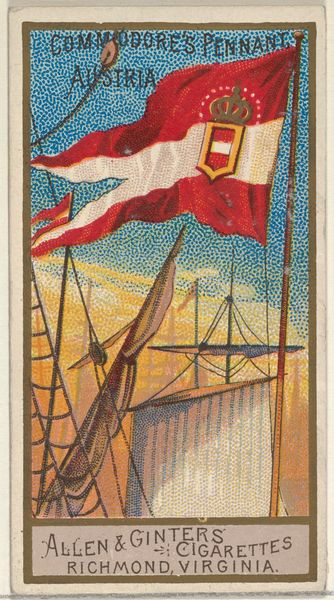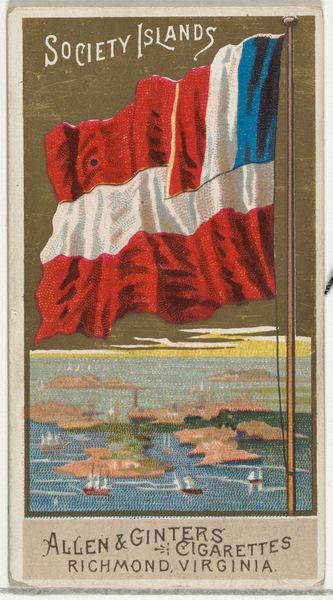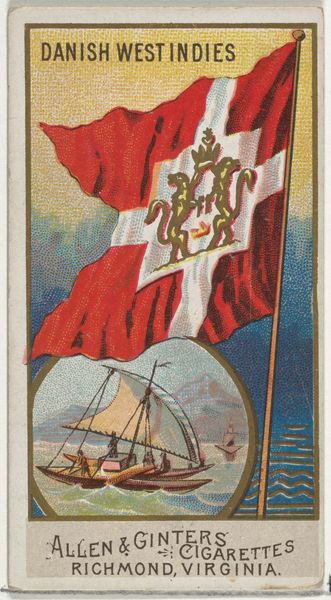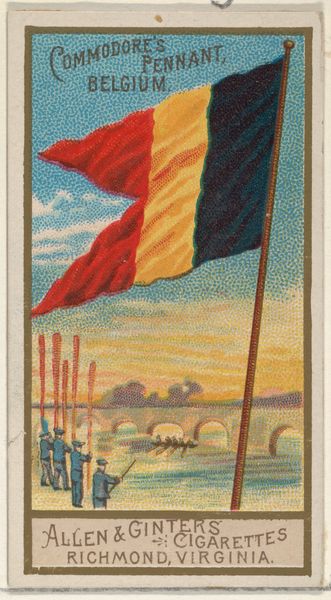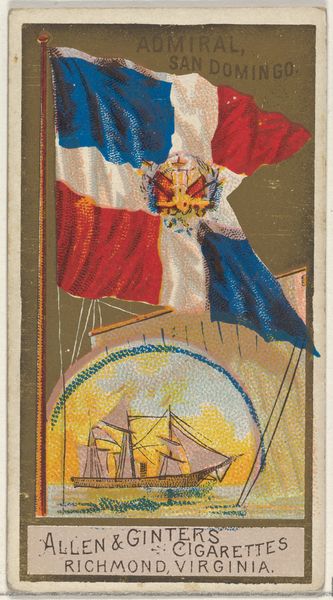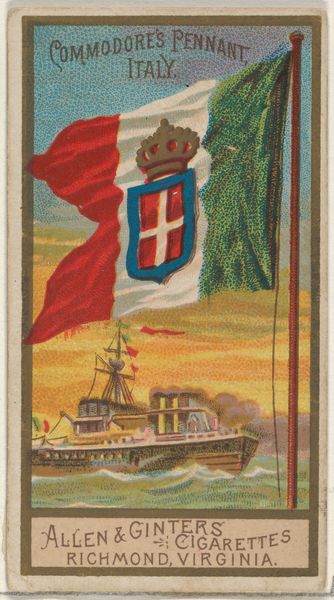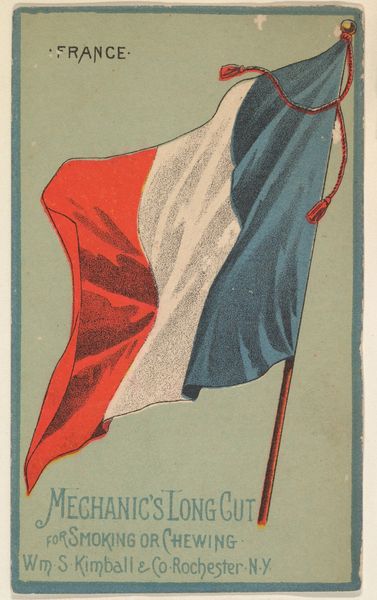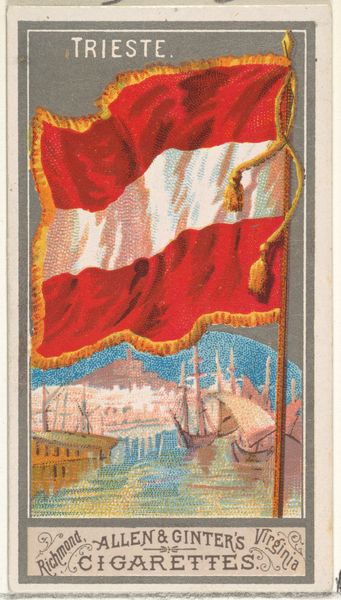
Vice-Admiral, France, from the Naval Flags series (N17) for Allen & Ginter Cigarettes Brands 1886 - 1891
0:00
0:00
# print
Dimensions: Sheet: 2 3/4 x 1 1/2 in. (7 x 3.8 cm)
Copyright: Public Domain
Curator: This colorful print showcases “Vice-Admiral, France” and comes from the Naval Flags series (N17), produced by Allen & Ginter Cigarettes between 1886 and 1891. Editor: It’s a strikingly stylized image, isn’t it? The bold shapes, flat colors, and that textured background give it a kind of otherworldly charm. There’s something distinctly…graphic about it. Curator: Allen & Ginter were known for these cards, which they included in their cigarette packs. They captured a popular taste for exoticism at the time, influenced by what we now call Japonisme. Look at the rendering of the sea and the flag—there’s a simplified elegance to them. Editor: The three stars on the flag, what do they symbolize? This flag is more symbolic than literal. Are the stars about authority or some other abstract concept? Curator: The French flag, or the Tricolore, itself is deeply symbolic, embodying the ideals of liberty, equality, and fraternity during the French Revolution. I imagine these stars further elaborate on the aspirations for maritime dominion. Perhaps an invocation of successful campaigns? Editor: Fascinating, these aren’t literally accurate depictions, and yet, they speak volumes. It feels very aligned with ukiyo-e prints where symbolism overtakes realism. In the same vein, even the size of the flag dwarfing the warship emphasizes the symbolic importance of naval authority, Curator: Exactly. These images become carriers of cultural values, instantly recognizable symbols of national power and aspirations. The print acts as a pocket-sized reminder of France’s naval strength in an era of intense colonial competition. It served as both a commercial item and a promoter of cultural ideas. Editor: Thinking about its design qualities and the history behind these sorts of collected series, I am captivated by its fusion of aesthetic economy and cultural load. Curator: For me, what remains intriguing is how these seemingly trivial objects managed to subtly encode historical narratives. It encourages a renewed reflection on collective identity and how everyday artifacts can subtly impact people's perceptions.
Comments
No comments
Be the first to comment and join the conversation on the ultimate creative platform.
